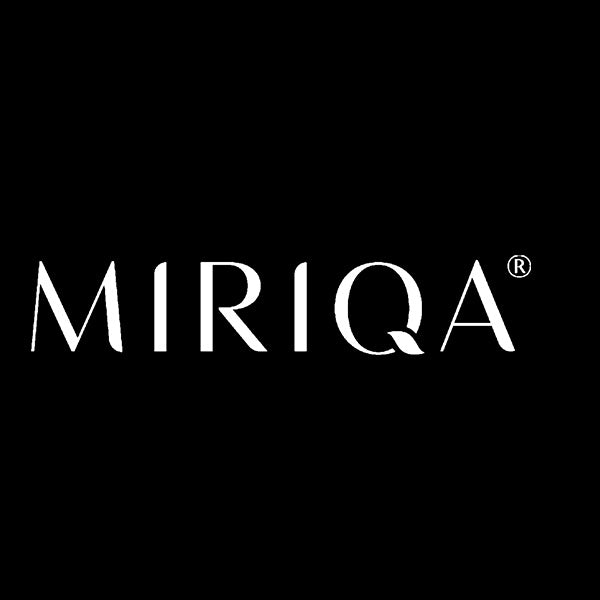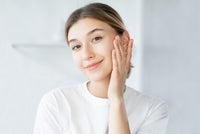Acne Marks vs Acne Scars: How to Identify, Prevent, & Treat Each

Do you find yourself frustrated by lingering blemishes and uneven skin texture? Understanding whether you're dealing with acne marks or acne scars can make all the difference in choosing the right treatments and achieving the clear, smooth skin you desire. Post-inflammatory hyperpigmentation (PIH) is a common type of acne mark, appearing as dark spots that eventually fade with time. Unlike PIH, acne scars are permanent changes in skin texture that result from the skin’s healing process after inflammation or injury from acne, and they do not fade away without intervention.
MIRIQA® understands the challenges of dealing with acne marks and scars, offering a range of targeted solutions to help you achieve a radiant complexion.
Overview: Acne Marks vs Acne Scars
Acne Marks | Acne Scars | |
Definition | Often referred to as PIH, post-inflammatory hyperpigmentation consists of areas of discoloration that appear after an acne lesion heals. This occurs when the skin produces excess melanin in response to inflammation, leading to the formation of dark spots or patches. | Permanent changes in skin texture resulting from acne lesions, develop when the skin's natural healing process is disrupted by significant tissue damage, leading to alterations in the skin's structure and appearance. |
Characteristics | Flat and range in colour from pink and red to brown or black, depending on an individual's skin tone and the severity of the inflammation. | Manifest as either indentations or raised areas on the skin's surface. |
Common causes |
| |
Duration | Typically fade over time, the process can take several months to years. | Permanent and do not naturally resolve on their own. |
How to Identify Acne Marks vs Acne Scars
Differentiating between acne marks and acne scars visually and textually is crucial for tailoring effective skin care strategies.
Unlike temporary discolorations like acne marks, acne scars alter the skin’s texture and can manifest as either indentations or raised areas on the skin’s surface.
There are several distinct types of acne scars, each with unique characteristics:
- Atrophic scars: Depressions in the skin caused by the loss of underlying tissue during the healing process:
- Ice pick scars: Narrow, deep scars that extend into the dermis
- Boxcar scars: Broad U-shaped, rectangular depressions with sharp edges
- Rolling scars: Wide depression with rounded edges, wave-like texture due to fibrous bands below the skin’s surface
- Hypertrophic scars: Raised, firm scars that occur when the body produces too much collagen during the healing process that are often red or pink in colour.
- Keloid Scars: A more severe form of hypertrophic scars that extend beyond the original wound site, thick, raised, and often larger than the original acne lesion. They can be red, pink, or darker than the surrounding skin.

Prevention Tips for Acne Marks and Acne Scars
Preventing Acne Marks
Preventing acne marks begins with early and effective treatment of acne itself. Timely intervention not only helps in reducing the severity of acne but also minimises the risk of developing lingering marks.
A consistent and well-structured skincare routine tailored to your skin type and concerns is pivotal in preventing acne marks. Gentle cleansing to remove excess oil and impurities and moisturising to hydrate the skin, using non-comedogenic products, can help maintain skin health and reduce inflammation that leads to PIH. Incorporating sunscreen into your daily skincare regimen is also essential for preventing hyperpigmentation caused by sun exposure.
Consider MIRIQA® Professional Skin Nutrition Supplement for an effective solution for preventing acne marks with its advanced formulations. This supplement features hydroxytyrosol derived from olives, known for reducing skin redness and inflammation associated with acne flare-ups. Incorporating MIRIQA® Skin into your daily skincare routine can significantly contribute to clearer, healthier skin by preventing acne marks before they form.
Preventing Acne Scars
Acne scars can be a frustrating and long-lasting reminder of acne breakouts. Unlike acne marks, which are primarily changes in skin pigmentation, acne scars alter the texture of the skin, leading to either indentations or raised areas. Preventing acne scars is thus crucial for maintaining smooth even skin.
One of the most effective ways to prevent acne scars is to resist the temptation to pick or squeeze pimples. When a pimple is picked, it worsens inflammation and damages the skin’s collagen and elastin, increasing the likelihood of permanent scarring. Gentle cleansing and spot treatments with salicylic acid or benzoyl peroxide can help manage acne without exacerbating inflammation or causing further damage.
For those prone to acne scarring, early intervention with professional skincare treatments is crucial. Dermatological procedures such as chemical peels, microneedling, and laser therapy can effectively reduce the appearance of existing acne scars and prevent new scars from forming. These treatments work by promoting skin cell turnover, stimulating collagen production, and improving overall skin texture.
Effective Treatments for Acne Marks and Acne Scars
When it comes to treating acne marks and scars, various options are available, ranging from over-the-counter (OTC) treatments to professional procedures and even home remedies and surgical treatments.
Acne Marks | Acne Scars | |
OTC treatments |
|
|
Professional treatments |
|
|
Others |
|
|
MIRIQA® Professional Skin Nutrition Supplement
Discover the secret to radiant skin with MIRIQA® Professional Skin Brightening Supplement, a multi-award-winning formula that stands out for its exceptional quality and proven results in enhancing skin health. Each ingredient in MIRIQA® Professional Skin Brightening Supplement’s formula is backed by scientific research, ensuring substantial benefits for your skin.

The supplement features colourless carotenoids from white tomatoes, olives, and L-cysteine, In treating acne marks and scars, these clinically proven ingredients work synergistically to offer multiple benefits:
- Colourless Carotenoids from White Tomatoes: These potent antioxidants protect the skin from UV damage, which prevent further pigmentation and help existing marks fade more quickly. They also promote skin cell regeneration, essential for healing scars and improving skin texture.
- Olives (Hydroxytyrosol): This ingredient is known for its powerful anti-inflammatory properties, which help reduce redness and inflammation associated with acne scars. By calming the skin, olives help minimise the appearance of scars and support the skin’s natural healing process. Hydroxytyrosol also aids in evening out skin tone, reducing the visibility of post-inflammatory hyperpigmentation (PIH).
- L-Cysteine: An amino acid that plays a crucial role in skin health, L-cysteine promotes the production of glutathione, a powerful antioxidant that helps lighten pigmentation and improve skin clarity. By boosting the skin’s antioxidant defence, L-cysteine aids in reducing acne marks and preventing new scars from forming. It also supports collagen production, essential for repairing scarred tissue and improving skin texture.
MIRIQA® Skin Extra Strength Professional Nutrition Supplement
Discover the transformative power of MIRIQA® Skin Extra Strength, an oral sunblock with skin lightening properties, designed to protect and rejuvenate your skin from within.

Like the MIRIQA® Professional Skin Nutrition Supplement, MIRIQA® Skin Extra Strength supports skin health, improves elasticity and promotes youthful skin. It has the addition of Polypodium Leucotomos (Tropical fern leaves), which is known for its excellent sun protection power, boasting powerful antioxidant properties that works as a sun shield to protect the skin from UV rays. It also acts as an oral sunscreen, while helping to lighten pigmentation and brighten overall skin tone, giving your skin a more youthful appearance.
By incorporating MIRIQA®'s Skin Supplement and MIRIQA® Skin Extra Strength into your daily routine, you can achieve well-rounded protection against UV damage while brightening your skin and reducing the appearance of acne marks and scars. This 100% natural, drug-free supplement provides holistic skincare with visible results, combining the benefits of UV protection, pigmentation lightening, and skin brightening in one convenient and effective product.
Skincare Routines for Healing Acne Marks and Scars
A comprehensive skincare routine can play a crucial role in helping to heal acne marks and scars while also maintaining overall skin health. Not sure where to begin? Here is a recommended skincare routine for you:
- Gentle cleansing: Use a gentle, non-comedogenic cleanser to remove dirt, oil, and impurities without stripping your skin of its natural moisture.
- Exfoliation: Exfoliate 2-3 times a week to remove dead skin cells and promote cell turnover. Alpha hydroxy acids (AHAs) like glycolic acid or beta hydroxy acids (BHAs) like salicylic acid are excellent choices for treating acne marks and scars, as they help to unclog pores and improve skin texture
- Toner: Apply a hydrating and calming toner to balance your skin’s pH levels and prepare it for better absorption of subsequent products.
- Facial serum: For acne marks, use Vitamin C serums to brighten and fade pigmentation. For scars, use serums with retinoids, niacinamide, or peptides to boost collagen and skin repair. MIRIQA® Professional Skin Brightening Supplement can be an excellent addition here, providing internal support with its clinically proven ingredients.
- Masks: Incorporate a face mask once or twice a week for extra hydration and nourishment.
- Hydration: Use a moisturiser suited to your skin type; lightweight for oily or acne-prone skin, and richer for dry skin.
- Sunscreen: Apply broad-spectrum sunscreen with at least SPF 30 generously every morning to protect against UV rays that worsen marks and scars. MIRIQA® Skin Extra Strength also acts as an oral sunblock, protecting you from UV rays.
When to See a Dermatologist

While a consistent skincare routine can significantly improve the appearance of acne marks and scars, sometimes professional help is necessary to achieve the best results. Knowing when to seek a dermatologist’s expertise can make a crucial difference in your skin’s health and appearance.
Professional Help for Acne Marks
If OTC treatments and home remedies aren’t effectively addressing your acne marks, it might be time to consult a dermatologist. Persistent hyperpigmentation and marks that worsen or don’t fade can benefit from specialised treatments that only a professional can provide.
Dermatologists offer a variety of treatments to tackle stubborn acne marks. These treatments are designed to target pigmentation and promote healthier, clearer skin:
- Chemical Peels: Exfoliates and remove the top layers of skin, promoting new skin growth
- Laser Therapy: Targets pigmentation to break up melanin deposits to even out skin tone
Professional Help for Acne Scars
Acne scars can be more challenging to treat than marks and may require professional intervention. If your scars are deep, raised, or resistant to home treatments, a dermatologist can offer advanced solutions to improve your skin’s texture and appearance:
- Microneedling: Uses fine needles to create tiny punctures in the skin, stimulating collagen production
- Laser Resurfacing: Removes damaged skin layers and promotes the growth of new, smoother skin
- Dermal Fillers: Injected to raise depressed scars and improve skin texture
Ready to achieve clear, beautiful skin?
Knowing the difference between acne marks and scars is crucial for effective treatment. Why settle for less when you can have a solution that works from the inside out? MIRIQA understands your struggle and offers targeted solutions to help you achieve clear, healthy skin. Our MIRIQA® Professional Skin Nutrition Supplement is packed with clinically proven ingredients designed to treat both acne marks and scars effectively. Imagine the confidence you'll gain with brighter, smoother skin.
Visit MIRIQA today and discover the difference our multi-award-winning supplement can make. Transform your skincare routine and embrace the radiant complexion you deserve!
References
- Connolly, D., Vu, H. L., Mariwalla, K., & Saedi, N. (2017). Acne scarring-pathogenesis, evaluation, and treatment options. The Journal of Clinical and Aesthetic Dermatology, 10(9), 12–23. Retrieved from https://www.ncbi.nlm.nih.gov/pubmed/29344322
- Fabbrocini, G., Annunziata, M. C., D′Arco, V., De Vita, V., Lodi, G., Mauriello, M. C., Pastore, F., & Monfrecola, G. (2010). Acne scars: Pathogenesis, classification and treatment. Dermatology Research and Practice, 2010(1). https://doi.org/10.1155/2010/893080
- City Skin Clinic. (n.d.). Acne Prone Skin. Retrieved from: https://cityskinclinic.com/the-skincare-routines/acne-prone-skin/#:~:text=Cleanse%20your%20skin%20in%20the,you're%20having%20active%20breakouts
- Gozali, M. V., & Zhou, B. (2015). Effective treatments of atrophic acne scars. The Journal of Clinical and Aesthetic Dermatology, 8(5), 33–40. Retrieved from https://www.ncbi.nlm.nih.gov/pubmed/26029333
- Cao, A. L., Sivesind, T. E., Abdel Hay, R., & Dellavalle, R. P. (2022). From the Cochrane library: Interventions for acne scars. JMIR Dermatology, 5(3), e37060. doi:10.2196/37060





